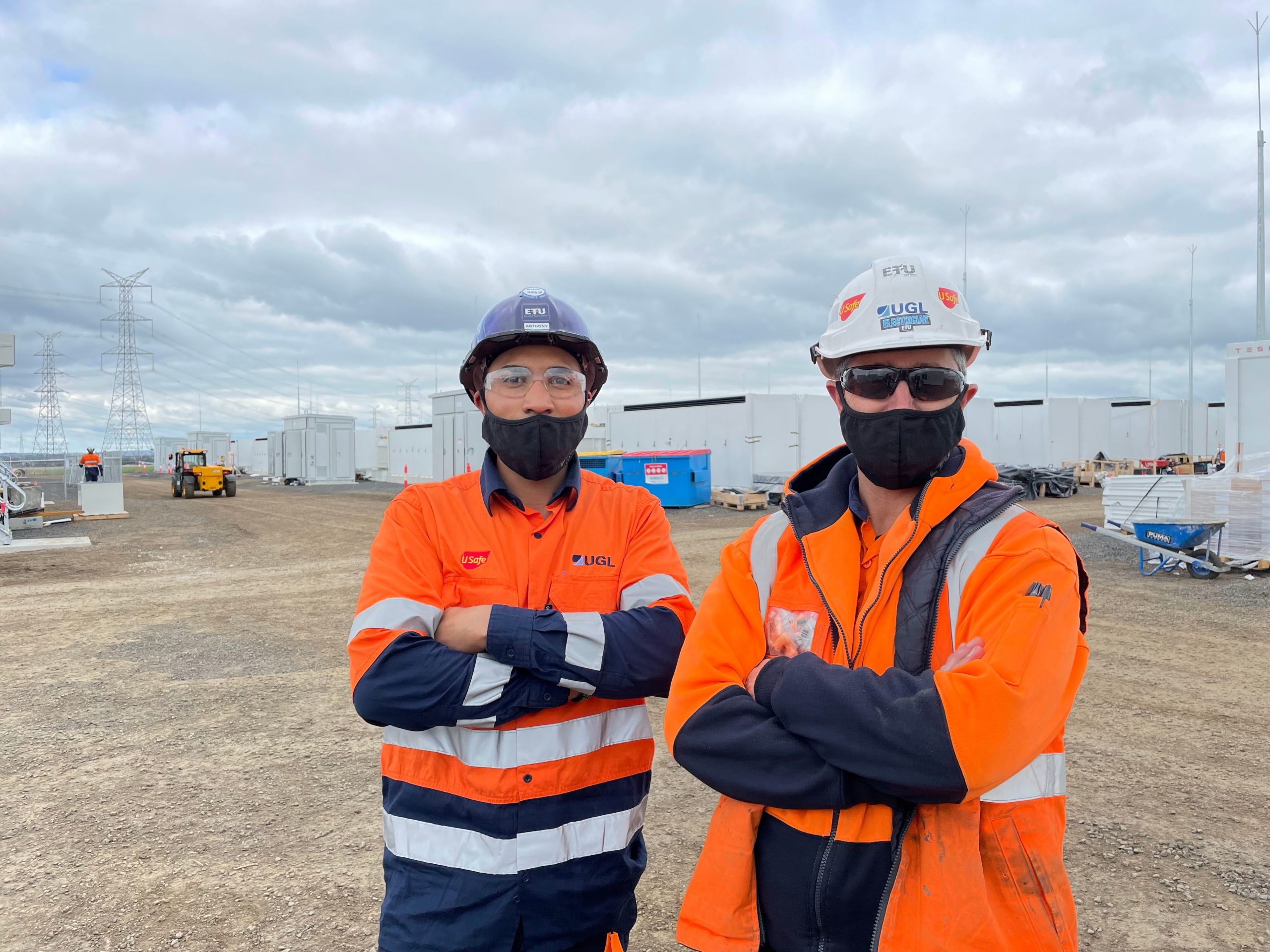The Victorian Big Battery (VBB) is nearing the end of its commissioning process and is expected to be fully operational in time for summer.
About 30 ETU members have worked on constructing the VBB near Geelong, which will be the biggest battery in the southern hemisphere when complete. A small number of ongoing maintenance jobs for ETU members will be required once the battery is operational.
The 300 MW/450 MWhr grid-scale battery storage project is being constructed next to Ausnet Services’ existing Moorabool Terminal Station. When complete it will store enough energy in reserve to power over 1 million homes for ½ hour.

ETU members working on the project are employed by UGL and Victech Electrical who both operate under the ETU’s Contracting EBA.
“The job has gone really well and has provided great opportunities for local labour input. We have had no industrial or OHS problems at all. This is the first renewable energy related project I’ve been involved in that has had no serious safety issues brought on by incompetent employers,”
– ETU Organiser Troy Knight.
In October, the VBB set a new benchmark for big batteries in Australia, charging at 150MW before quickly discharging at 125MW, beating the previous benchmark set by the Hornsdale Power Reserve in South Australia.
The battery will support Victoria’s clean energy transition and secure reliable, affordable power for Victorians, helping the state meet its renewable energy target of 50% by 2030.
At its basic level, the battery will charge when there is excess energy and discharge when demand is high. But it will also provide frequency support, virtual inertia and network services, as well as helping to firm variable renewable energy.

It will also operate as a virtual transmission line between November and March each year, enabling increased flows of up to 250MW over the Victoria-New South Wales interconnector. This will alleviate unscheduled load shedding over the summer months. The battery will also participate in energy markets throughout the year, with 50MW available for this purpose during summer and 300MW at other times.
